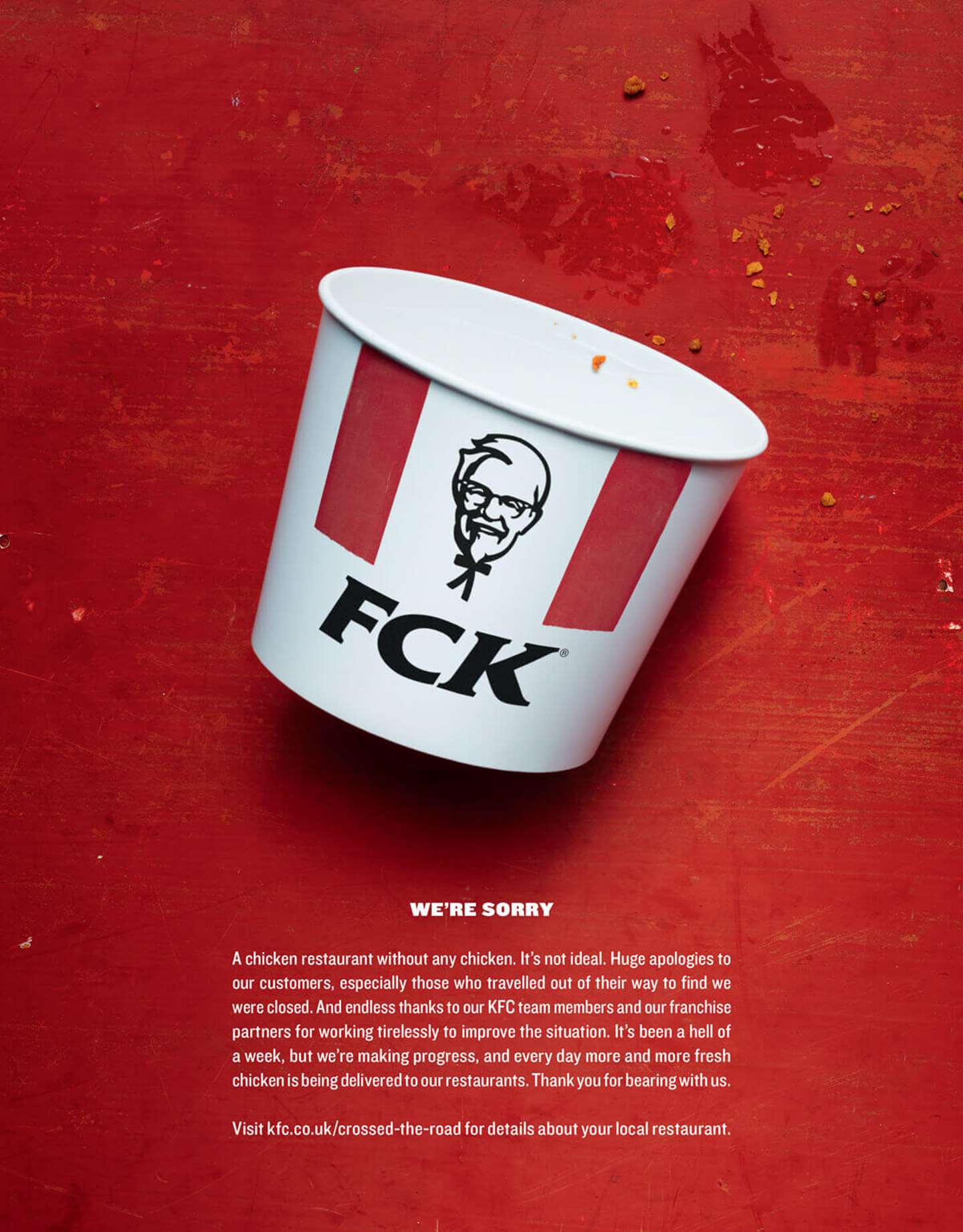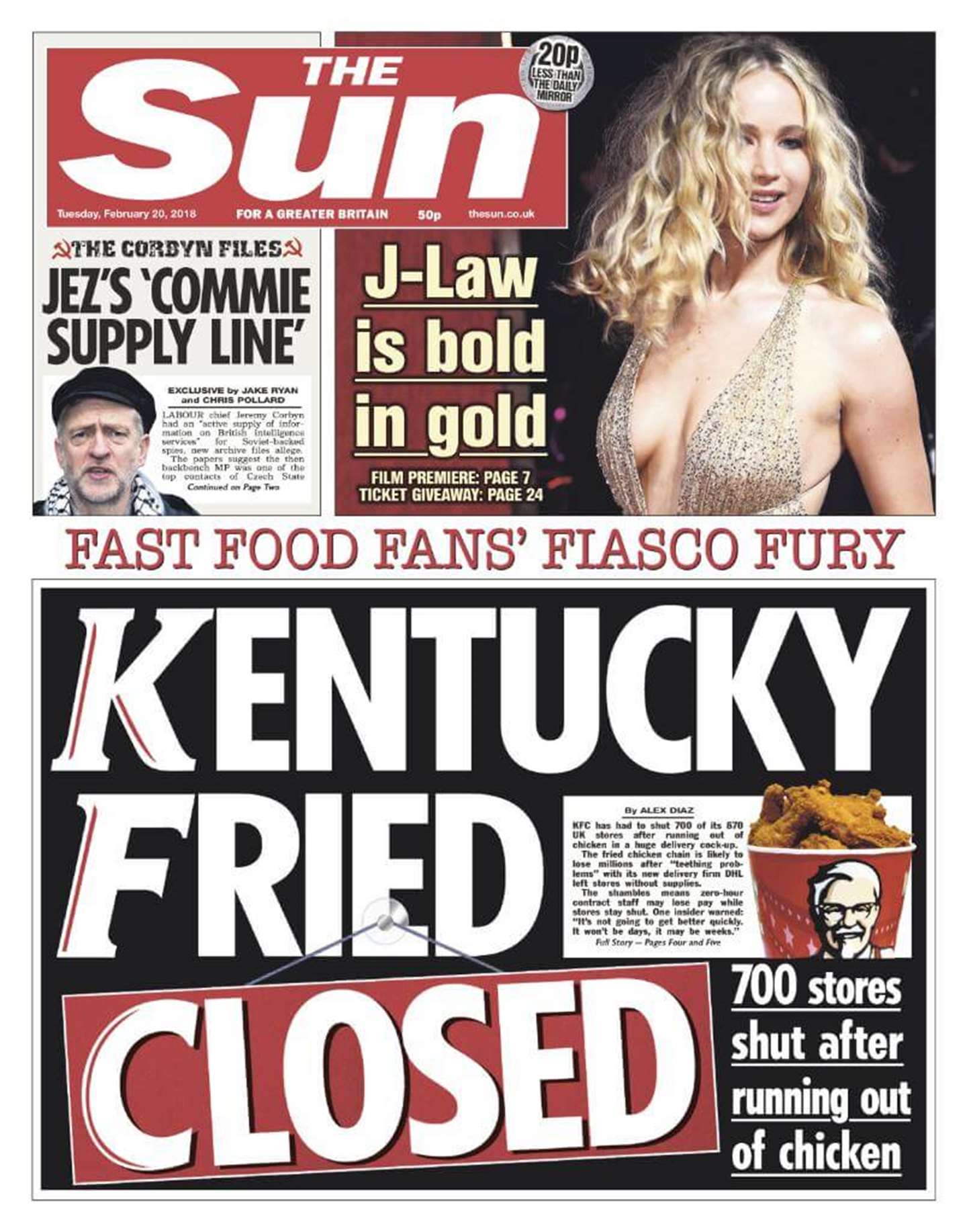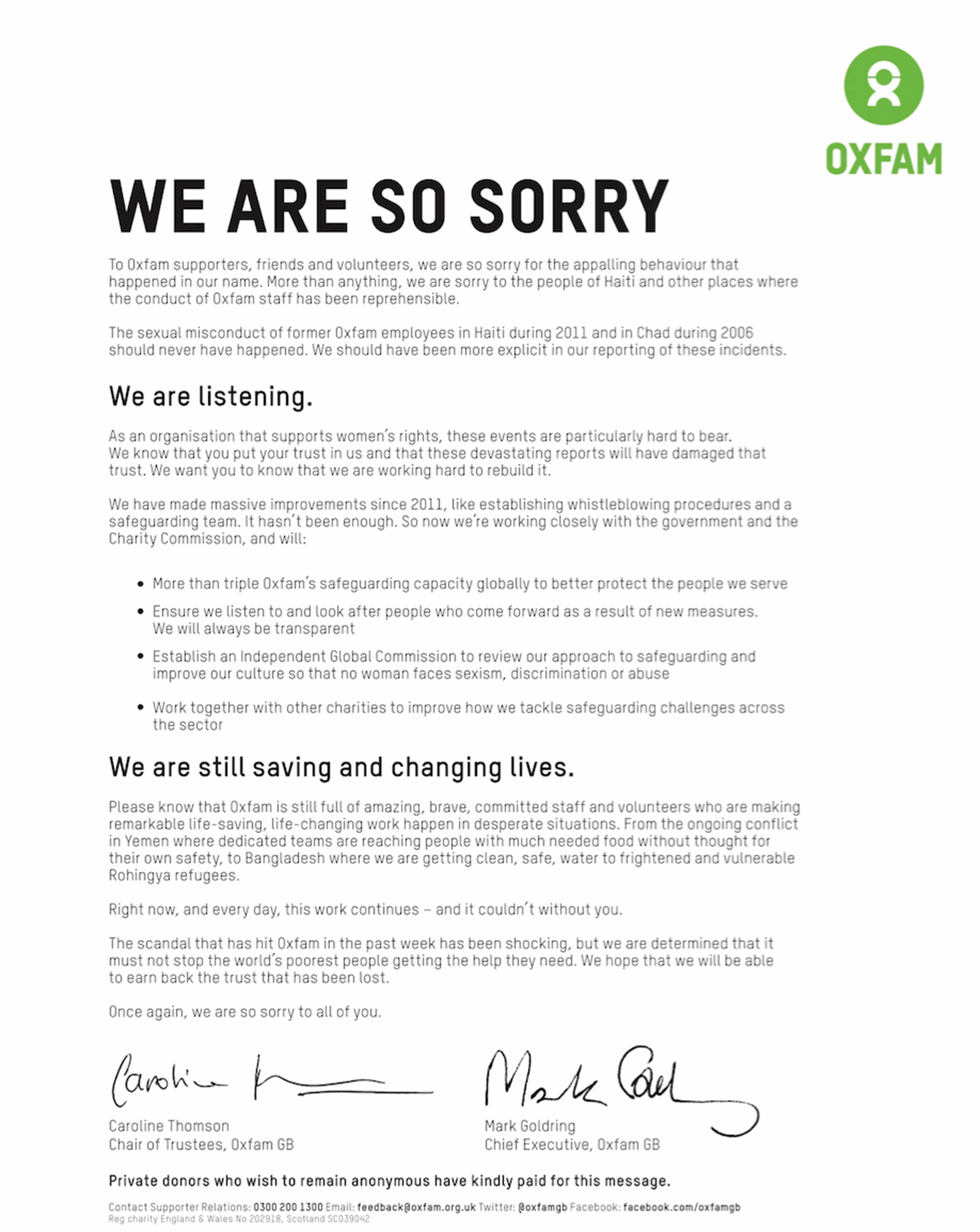The power of print at a glance
- Print media isn’t reactive – and makes for “a more complete, very public” act of contrition
- Print media offers a trusted and engaged environment in which to show you’ve learned something
- Newspapers help you to get in front of the right people
From political backpedalling to investment blunders, the organisational apology is a regular fixture of the news cycle. Sure, believability varies from case to case, but what’s interesting is that while brands do most of their talking online, saying sorry is something they reserve for print media.
Just look at the Facebook/Cambridge Analytica debacle, and how, when push came to shove, the social media giant was forced to pen a full page apology in seven British and three American newspapers.
Why print? Well, that’s something we decided to ask the experts – looking at two high-profile recent examples from Oxfam and KFC.
Print shows you’ve considered your apology
A knee-jerk response often just makes you look like… well, an insincere jerk. By condensing your apology into one, well-crafted “we’re sorry” note, print gives the perception that you’ve taken the time to reflect on your wrong-doing, provides a much-needed specificity when it comes to messaging – and works as a kind of catch-all reference point for a brand.
“If you’re standing in front of reporters, speaking on camera, or even writing a tweet, you’re going to get defensive, start scapegoating or take a detour,” says Edwin Battistella, professor of humanities and culture at Southern Oregon University and author of Sorry About That: The Language of Public Apology.
An apology in print, however, usually does a decent job, argues Professor Roy J. Lewicki, a leading scholar in the study of conflict management and author of Think Before You Speak: A Complete Guide to Strategic Negotiation. “They can be longer, more complete and very public, provided it’s delivered to the right people,” he says.
Battistella agrees: “A print apology goes through several drafts and a writer will think about it carefully before publishing.”
The point then, is that print is not reactive. Nor is it emotionally led.
It can also be a powerful brand-building tool… if it shows you’ve learned something. “We saw that with Tylenol and Johnson & Johnson in 1982 [when the pharmaceutical company spearheaded changes to the drug packaging industry after poison was found in Tylenol capsules] and we’re seeing it again with Oxfam now.”
In the case of Oxfam – which has been under fire since it was revealed that senior staff paid women for sex in the aftermath of the 2010 earthquake in Haiti – its act of contrition in The Times and The Guardian made a pretty decent fist of hosing down its charred reputation.
And print has the perception of permanence
Vanessa Clifford, CEO of Newsworks, was quoted in Marketing Week as saying: “Putting a statement like this [Oxfam’s ad] in print holds gravitas and garners attention, becoming a new story in itself, while also allowing the brand to apologise, reassure and lay out its plans for change via a long-copy approach.”
“I think that maybe it’s a matter of audience perception,” says Battistella. “Online apologies are perceived as too casual – less a matter of permanent record. I think that will change in the future, but print carries a sense of permanence that digital simply does not.”
Whatever the channel, create a consistent brand story
When, in February, KFC closed hundreds of its UK branches due to a chicken shortage, the fast-food chain (helped by Mother London) took out a cheeky ad in The Sun and Metro, admitting: “A chicken restaurant without a chicken. It’s not ideal.”
It even went a step further, brazenly rearranging its brand acronym to read “FCK”. The result, according to group managing director of Frank PR Andrew Bloch, was an ad that demanded to be seen – a “masterclass in PR crisis management”.
But it’s probably not something that would have worked as well on television, suggests Battistella: “It doesn’t pronounce well, for one.” He cites the example of Kmart in the United States, which in 2013 used the line “Ship my Pants” in its TV campaign. Unsurprisingly, the effort didn’t go down well. It was, Battistella says, “too on the nose for TV”.
In short, by running with a sweary print ad that aligned closely with the tone of previous campaigns, KFC reinforced its newly acquired image as the bad boy of fast food franchises (check out its dancing chicken, the most complained about ad of 2017).
It’s the type of approach that IKEA often employs to great success – albeit to a less extreme degree. Of course, we’re talking about the flat-pack furniture giant’s edgy, brilliant pee-based pregnancy test that recently appeared in Amelia magazine.
By fostering a familiar sense of mischief in print, KFC is creating a brand narrative its customers can relate to. In fact, Battistella believes the ad will be so successful that “it may earn them more love than the original faux pas cost”. Job done, then.




